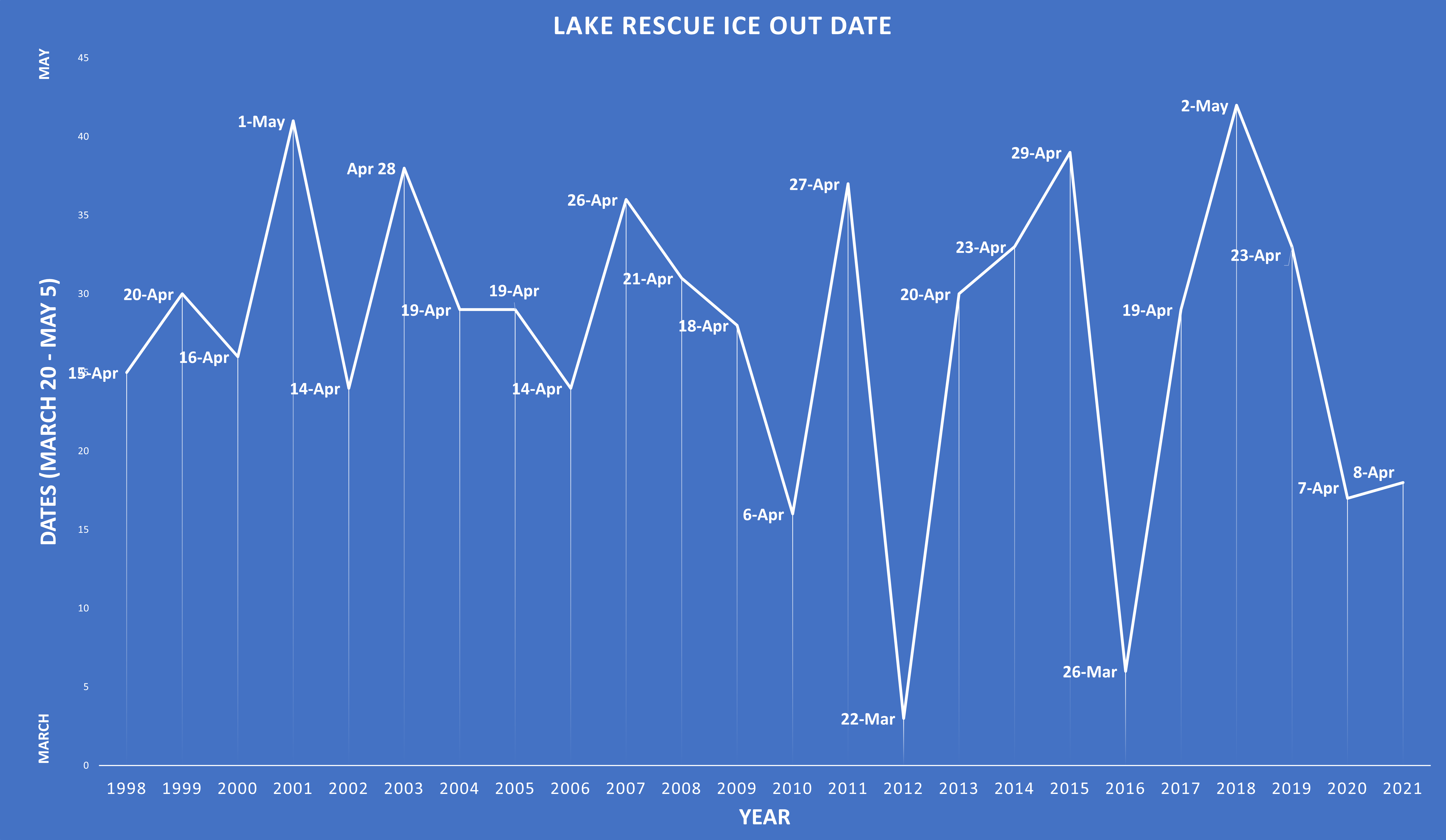how does lake ice melt?
Here is a description of how ice melts from a page on the Minnesota Department of Natural Resources website.
- In the late fall, the lake loses heat to the atmosphere, and then on a day or night when the wind is not blowing, ice forms. The ice gets thicker as long as the lake can continue to lose heat.
- In most Januaries and Februaries, snow both reflects sunlight and insulates the lake. With a thick snow layer, the lake neither gains nor loses heat. The bottom sediment is actually heating the lake water slightly over the winter, from stored summer heat.
- Around March, as the air warms and the sun gets more intense, the snow melts, allowing light to penetrate the ice. Because the ice acts like the glass in a greenhouse, the water beneath it begins to warm, and the ice begins to melt FROM THE BOTTOM.
- When the ice thickness erodes to between 4 and 12 inches, it transforms into long vertical crystals called "candles." These conduct light even better, so the ice starts to look black, because it is not reflecting much sunlight.
- Warming continues because the light energy is being transferred to the water below the ice. Meltwater fills in between the crystals, which begin breaking apart. The surface appears grayish as the ice reflects a bit more light than before.
- The wind comes up, and breaks the surface apart. The candles will often be blown to one side of the lake, making a tinkling sound as they knock against one another, and piling up on the shore. In hours, a sparkling blue lake, once again!
what is "ice out"?
The 'Ice Out' date has been defined as the date when when the the ice is gone from the middle of lake. Frank Wingate has been keeping a record of this for Lake Rescue for the last 24 years. Over this period, the median Ice Out date is April 19, and the average Ice Out date is April 17, with 13 of 24 dates falling between April 14 and April 24. The two earliest dates were March 22 in 2012 and March 26 in 2016, and the two latest dates were May 1 in 2001 and May 2, 2018. Of note is the increased variability in dates since about 2010.


